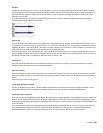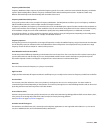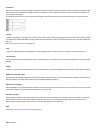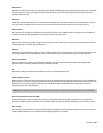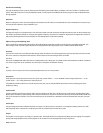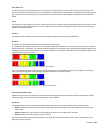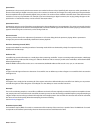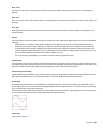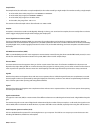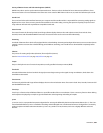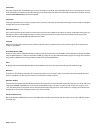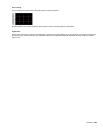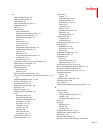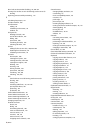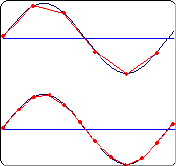
Ruler, Level
The level ruler is the area on a data window to the left of the waveform display. It shows the vertical axis units as a percentage or in
decibels.
Ruler, Time
The time ruler is the area on a data window above the waveform display. It shows the horizontal axis units as well as marker, region, and
loop tags.
Ruler Tags
Ruler tags are the small tab-shaped controls on the time ruler that represent the location of markers, regions, and loop points in the
waveform display.
Sample
The word sample is used in many different (and often confusing) ways when talking about digital sound. Here are some of the different
meanings:
• A discrete point in time which a sound signal is divided into when digitizing. For example, an audio CD-ROM contains 44,100
samples per second. Each sample is really only a number that contains the amplitude value of a waveform measured over time.
• A sound that has been recorded in a digital format; used by musicians who make short recordings of musical instruments to be
used for composition and performance of music or sound effects. These recordings are called samples. In this Help system, we try
to use sound file instead of sample whenever referring to a digital recording.
• The act of recording sound digitally, i.e. to sample an instrument means to digitize and store it.
Sample Dump
A sample dump is the process of transferring sample data between music equipment. Because of the large amounts of data required to
store digital sound, sample dumps may take a very long time when using the MIDI Sample Dump Standard (SDS). However, when using
the faster SCSI MIDI Device Interface (SMDI) protocol, sample dumps can be performed many times faster.
Sample Dump Standard (SDS)
The MIDI Sample Dump Standard is a way to transfer samples between music equipment. Samples transferred with SDS are sent across
MIDI cables at the MIDI data rate of 31,250 Hz baud. SMDI is a much faster sample transfer method for musicians.
Sample Rate
The Sample Rate (also referred to as the Sampling Rate or Sampling Frequency) is the number of samples per second used to store a
sound. High sample rates, such as 44,100 Hz provide higher fidelity than lower sample rates, such as 11,025 Hz. However, more storage
space is required when using higher sample rates.
In the following example, each red dot represents one sample. Because the lower waveform is represented by twice as many samples as
the top waveform, the samples are able to better approximate the original waveform.
Sample Size
See Bit Depth on page 345.
APPENDIX E | 355



